- Quick Read
- Deep Read ( 6 Min. )

Why is Christian Science in our name?
Our name is about honesty. The Monitor is owned by The Christian Science Church, and we’ve always been transparent about that.
The Church publishes the Monitor because it sees good journalism as vital to progress in the world. Since 1908, we’ve aimed “to injure no man, but to bless all mankind,” as our founder, Mary Baker Eddy, put it.
Here, you’ll find award-winning journalism not driven by commercial influences – a news organization that takes seriously its mission to uplift the world by seeking solutions and finding reasons for credible hope.
Explore values journalism About usMonitor Daily Podcast
- Follow us:
- Apple Podcasts
- Spotify
- RSS Feed
- Download
TODAY’S INTRO
An Arab-Jewish ‘Friendsgiving’
 Mark Sappenfield
Mark Sappenfield
As an assistant professor at Carnegie Mellon University, Nevine Abraham has loved holding “cook-alongs” for students. The goal is to teach Arab culture and hospitality. Last week, however, her cook-along became a Friendsgiving.
Dr. Abraham teamed up with Dareen Basma, an associate dean, to help ease tensions and foster communal bonding on campus. Jewish Israeli dishes were added, and everyone cooked together. “It’s unrealistic to say that cooking together is the key to peace,” Dr. Abraham tells me in an email. But “there is an act of giving and caring when cooking for others and sharing a meal.”
What is needed, adds Dr. Basma, is openness and a desire to engage. “Being connected to a strong sense of community is what can help foster healing and resilience.”
Share this article
Link copied.

Help fund Monitor journalism for $11/ month
Already a subscriber? Login

Monitor journalism changes lives because we open that too-small box that most people think they live in. We believe news can and should expand a sense of identity and possibility beyond narrow conventional expectations.
Our work isn't possible without your support.
In Gaza, uncertainty and opportunity amid fighting’s lull
What do you do during a weekend respite from war? For some, it’s as simple as walking on the beach or fixing a child’s bike tire. But for many, it’s finding family. The reunions are sweet and somber, with sharp reminders of what has been lost. Over everything looms a war threatening to march onward.
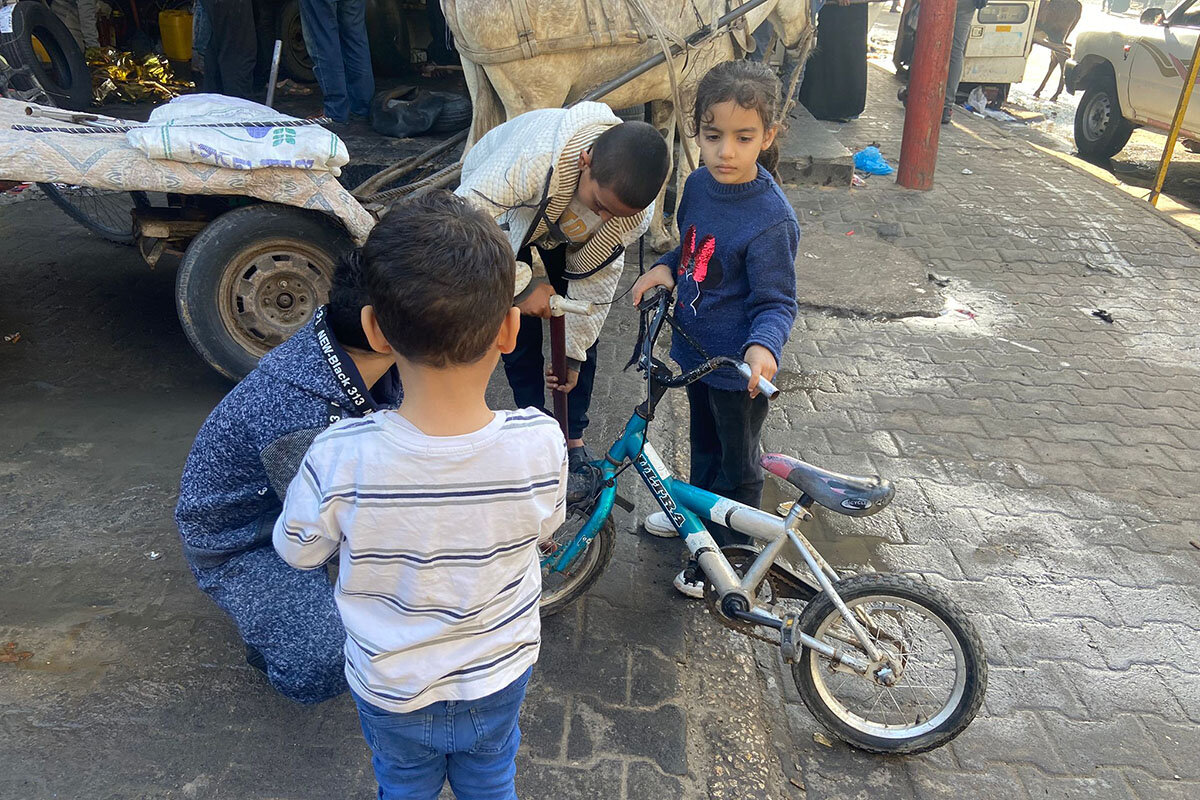
-
By Ghada Abdulfattah Special contributor
-
Taylor Luck Special correspondent
Late Monday, Qatar announced it had brokered an agreement between Hamas and Israel to extend the cessation of hostilities for two more days to facilitate the continued releases of Israeli hostages and Palestinian prisoners.
But before the contentious talks had borne fruit, Palestinian residents of the Gaza Strip seized the four-day respite from Israel’s air campaign and ground invasion, and took the chance they had dreamt of for weeks – to pick up pieces of lives they say will never be whole again.
Families clogged roads as they moved between towns to gather groceries, bury relatives, or even just visit the beach to walk on the sand or dip their toes in the water, knowing it may be their last chance for weeks.
The realization that the cease-fire would not allow displaced Palestinians to return to their homes in the northern part of the strip, particularly Gaza City, dampened the spirits of the many who were prevented from crossing the central Wadi Gaza dividing line by the Israeli army.
“It is like having Eid holiday but being prevented from celebrating it,” says Amany al-Khalout, a social media influencer and food blogger. “I miss my home, my kitchen, my previous life. I wish this cease-fire would last longer and become permanent.”
In Gaza, uncertainty and opportunity amid fighting’s lull
Like thousands of Palestinians in Gaza, Ghada Abu Irmana and her family were on the move this weekend.
Yet unlike during the past few weeks of the conflict, which saw 1.2 million Gaza residents evacuate homes and brave missiles for makeshift shelters in the southern Gaza Strip, they were not fleeing airstrikes.
Aided by clear skies and a temporary halt to the fighting, they were racing toward family.
Ms. Abu Irmana, her husband, and her three children packed into a pickup truck for hire along with 25 other passengers. All were heading as far north as possible to reconnect with parents, siblings, grandparents, and children, and see if homes are still standing.
“We haven’t seen them in 40 days,” Ms. Abu Irmana says of her in-laws in her home in the Bureij refugee camp.
Others were making the journey to central Gaza to see whom they can bury.
In the four-day cease-fire that had been set to end Monday evening, the first respite from Israel’s air campaign and ground invasion of Gaza that followed Hamas’ Oct. 7 attack, Gaza residents took the chance they had dreamt of for weeks – to pick up pieces of lives they say will never be whole again.
Late Monday, Qatar announced it had brokered an agreement between Hamas and Israel to extend the truce to facilitate more hostage releases for two more days. Before Monday night’s expected reciprocal releases from the first deal, Hamas had released 40 Israeli hostages and Israel 117 Palestinian prisoners into the West Bank.
But before the contentious talks on an extension had borne fruit, roads in Rafah and heading north were packed with cars, tuk-tuks, and donkey carts.
Families moved between towns to gather groceries, bury relatives, or even just visit the beach to walk on the sand or dip their toes in the water, knowing it may be their last chance for weeks – and perhaps for some, ever.
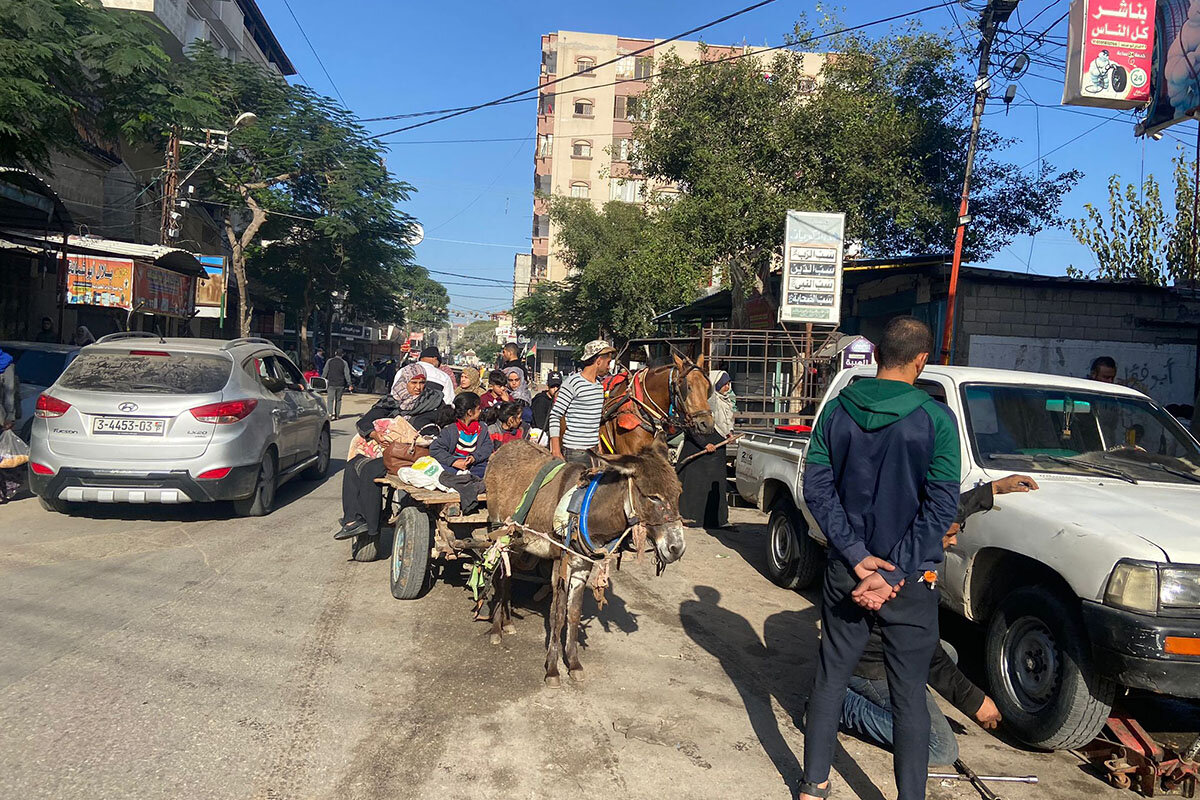
Transportation in high demand
Early Friday, families packed onto pickup trucks normally hired to cart sheep or furniture but now ferrying 30 standing passengers for a one-hour journey to central Gaza along cracked and cratered roads.
“Since the day we left home one week into the war, we do not know what happened to our house,” Ms. Abu Irmana says as the driver takes off.
“My husband told me it was partially devastated; I hope to find that it’s fine. I hope this cease-fire will continue,” she says. “We have been waiting with bated breath” for what happens next.
With demand for transportation high and time short, people even crammed into the trunks of taxis, their legs dangling over bumpers.
The four days without missile strikes created a chance for some to harvest olives or search for medicine.
Friday, the first full day of the cease-fire, the beach in Khan Yunis, packed with families, was the first stop for Amany al-Khalout, a social media influencer and food blogger. It was her first walk in weeks.
“Unlike Gaza City, there aren’t many cafes and parks here, but it is still nice to take a short walk,” says Ms. Khalout, who had left her home in Gaza’s Al Karama neighborhood for Khan Yunis in the south.
Six-year-old Rita Idwan, whose bicycle tire was punctured early in the war, had to wait for a lull in the fighting to get it repaired at a garage near their home in Rafah.
“She kept pleading with me to let her ride her bike. It was unsafe for anyone to venture outside,” says her mother, Rasha Idwan.
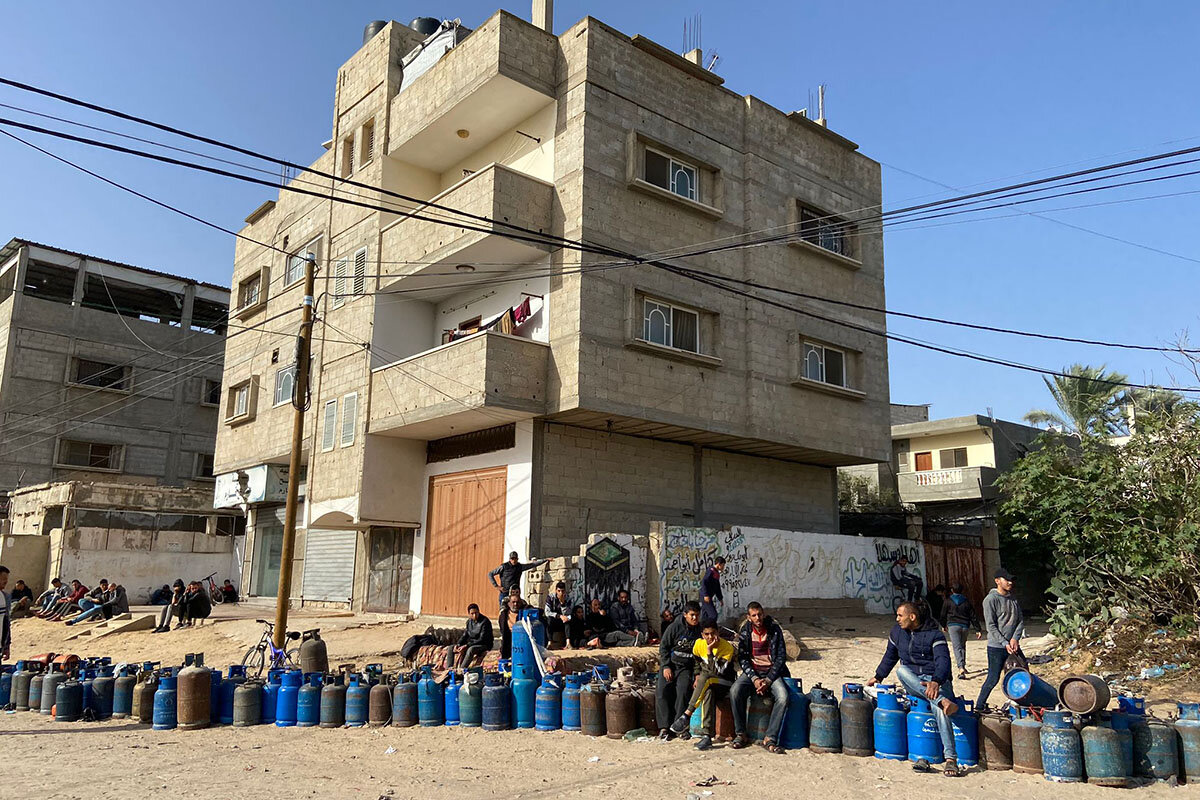
On Friday, Rita’s cousin accompanied her to the garage. Hours later, she is scooting around on newly inflated tires.
“Happy now?” Ms. Idwan asks. Rita, sitting atop her bike, nods shyly.
Grief and disappointment
The realization that the cease-fire would not allow displaced Palestinians to return to their homes in the northern part of the strip, particularly Gaza City, dampened the spirits of many.
People anxious to check on homes, possessions, and relatives with whom they had lost contact were prevented from crossing the central Wadi Gaza dividing line by the Israeli army, which occupies large swaths of Gaza City.
“It is like having Eid holiday but being prevented from celebrating it,” says Ms. Khalout. “I miss my home, my kitchen, my previous life. I wish this cease-fire would last longer and become permanent.”
Many utilized the hours free of bombings to bury loved ones.
At Al-Aqsa Hospital in Deir al-Balah, in central Gaza, bodies, many of which had yet to be identified, were lined up in a large tent Friday in a makeshift morgue, waiting to be transported for prayers and a mass burial in a nearby empty lot. A grieving mother stood over her adult son’s lifeless form, weeping and wailing. Evacuees huddled in tents nearby.
Yet some did not even have the consolation of burying their dead.
Fatima Najjar, an evacuee living in a shared tent in the hospital’s courtyard, received the gut-wrenching news that her sister Aisha was killed by an Israeli airstrike on her temporary shelter in Khan Yunis hours before the cease-fire was announced late Thursday.
“I don’t know if my sister has been laid to rest. I don’t know if her daughter is still alive,” says Ms. Najjar, seated after having just fetched water. A third sister reads the Quran aloud and prays. “I don’t know if the rest of her family has been rescued from the rubble.”
“Can you believe it?” she says of her sister, taken “on the night of the cease-fire.”
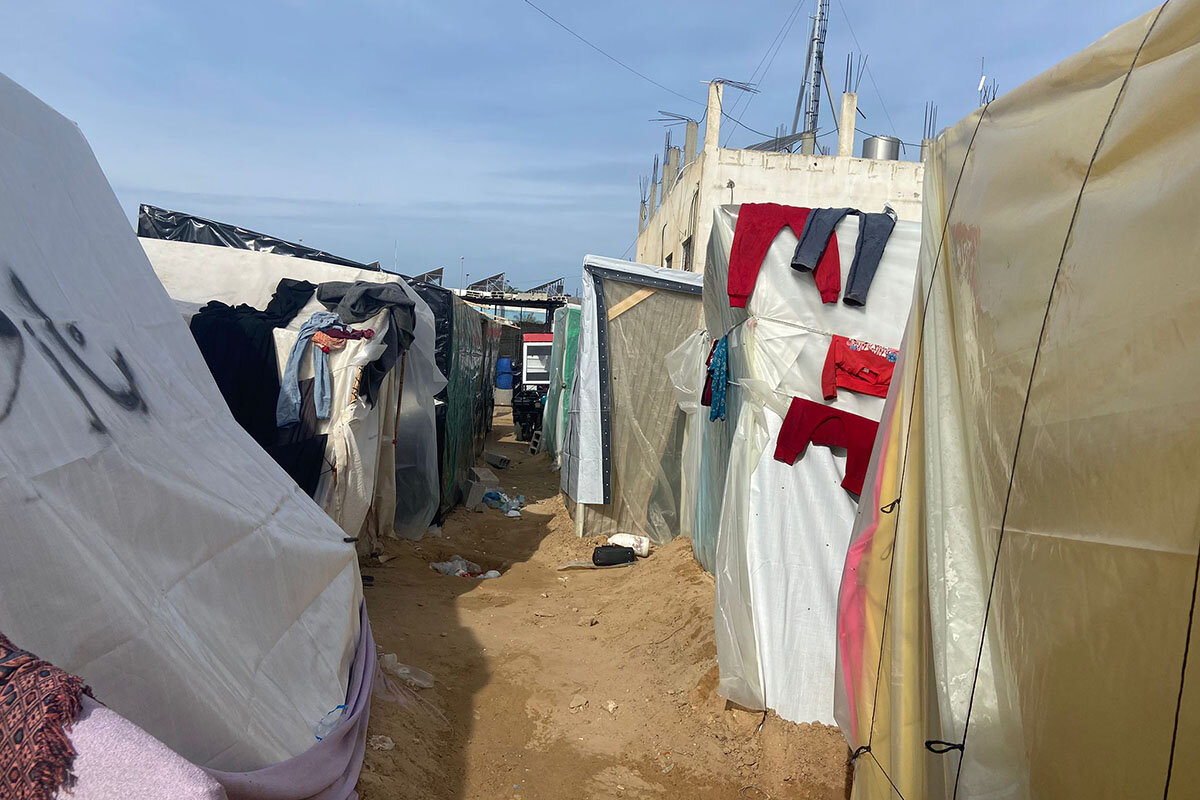
Somayaa Abu Nada lost her family home in the Zaytoun quarter of Gaza City at the beginning of the war, forcing her and part of her family to evacuate to Rafah, and her sister and other relatives to stay with an aunt in Khan Yunis.
At the time, she says, “the most important thing was that we stay alive.”
A sister who loved books
But now Ms. Abu Nada can only think of fate and the death of her 32-year-old sister, Hiba Abu Nada, a poet and avid bookworm, who was killed by an Israeli airstrike on their aunt’s home Oct. 20.
The family hastily buried Hiba but was unable to reach the bodies of several other family members trapped beneath the debris.
On Friday Ms. Abu Nada returned to her aunt’s house to retrieve the bodies of her aunt’s brothers-in-law and others to give them a proper burial more than a month after their deaths.
She searched amongst the debris for Hiba’s belongings, keepsakes to remember her by – particularly her writings and books.
“She read everything: books, articles, novels, anything that had writing on it,” Ms. Abu Nada says. “I knew she would be reading and writing even during wartime, even during the worst days of our lives.”
Among the rubble, she finally found a book, “The Story of a Magian Love,” with Hiba’s handwriting on the cover: “October 16, 2023,” the day she finished reading the novel.
“I felt a sense of happiness,” Ms. Abu Nada says, “This novel was being read by my sister during the Gaza war in the fall of 2023.”
Uncertain as to whether Israel and Hamas would extend the truce, and amid Israel’s insistence it would continue the war, Ms. Abu Nada began reading her sister’s book.
The novel, by Abdul Rahman Munif, is about a young student grappling with unrequited love.
“I don’t know if I will finish the book or if I will die first,” she says.
Taylor Luck contributed from Amman, Jordan.

A deeper look
Children pioneer a right to a secure future
Is a safe environment a human right? A Montana lawsuit raises that question and breaks new legal ground. The fourth part of our Climate Generation series looks deeper into the lawsuit, which critics call “political theater.” Yet many young people are increasingly worried that adults are leaving them a broken planet.
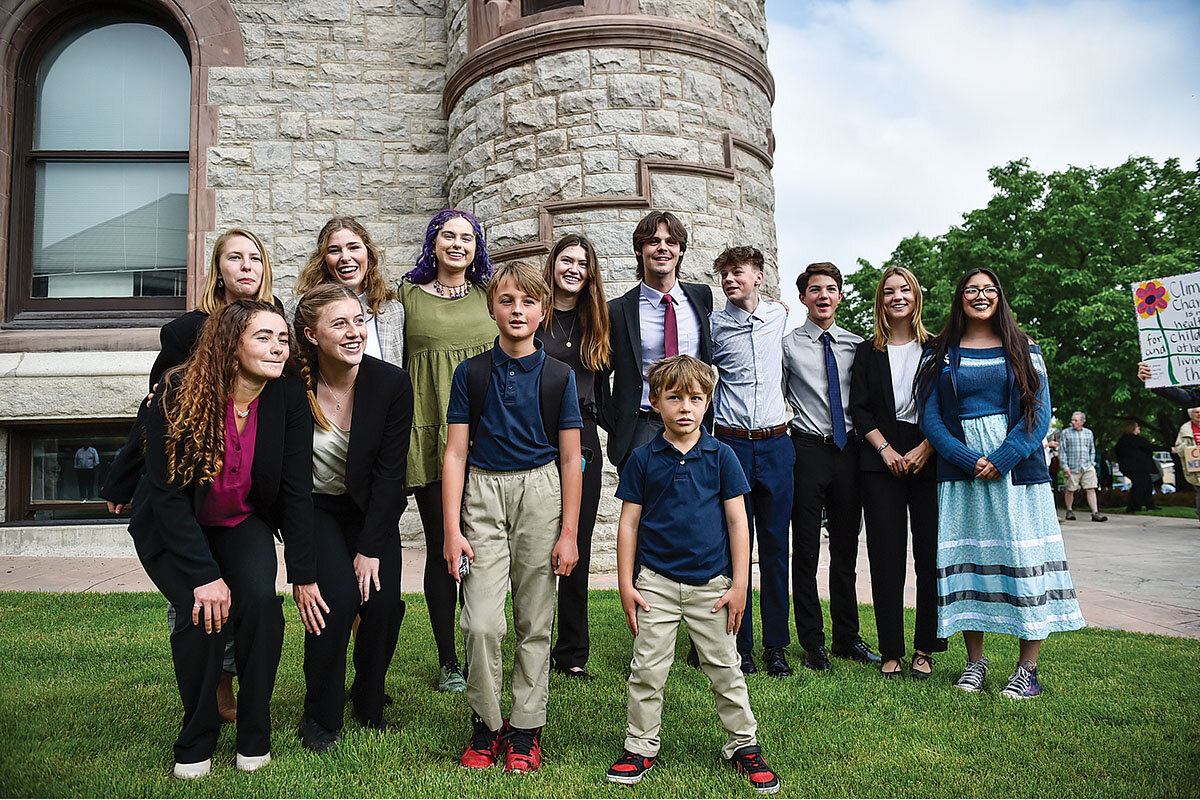
- Quick Read
- Deep Read ( 16 Min. )
In June 2023, the hottest June ever recorded in a summer that would break global heat records, 16 young people walked into a courthouse in Helena, Montana, and insisted they had the right to a stable climate.
They asked the government of Montana to uphold its Constitution, one of a handful in the United States that explicitly protects current and future citizens’ right to a healthful environment.
The state argued that the well-intentioned children were being exploited by an outside interest group.
For years, youth around the world have been suing governments to address what scientists worldwide agree is an environmental crisis caused by human behavior. But in the U.S., the country responsible for sending more heat-trapping gases into the atmosphere than any other nation, young people had failed to get courts to rule in their favor.
Then the Montana judge ruled in the plaintiffs’ favor last summer, saying Montana policymakers had violated the young people’s constitutional rights by ignoring the climate impacts of their energy decisions.
For what we call the Climate Generation, young people born since 1989, the case was “incredibly important,” says Shaina Sadai, the Hitz fellow for litigation-relevant science at the Union of Concerned Scientists. “A win anywhere for any of them is a win for all of them.”
Children pioneer a right to a secure future
In June 2023, the hottest June ever recorded in a summer that would break global heat records, 16 young people walked into a courthouse in Helena, Montana, and insisted that they had the right to a stable climate.
The moment was, in the United States, unprecedented.
For years, youth around the world had been suing governments – state, regional, federal – and demanding more action by policymakers to address what scientists worldwide agree is an environmental crisis directly caused by human behavior. By 2022 there had been 34 global climate cases brought on behalf of plaintiffs ages 25 and younger – part of a global climate litigation explosion, according to Columbia University’s Sabin Center for Climate Change Law.
And in some places, young people had begun to make headway. A German court in 2021, for instance, agreed with youth that the government needed to do more to reduce emissions. Colombia’s Supreme Court agreed with young plaintiffs in 2018 that officials needed to better protect the Amazon rainforest, in part because of climate concerns.
But in the U.S., the country that has sent more heat-trapping gases into the atmosphere than any other nation, young people had failed to get courts to rule in their favor.
That was about to change.
In the courtroom that day, the young people were asking not for any financial reward, but for the government of Montana to uphold its Constitution, one of a handful in the U.S. that explicitly protects both current and future citizens’ right to a healthful environment. There was Rikki Held, the oldest of the Montana youth plaintiffs at 22, whose name was on the lawsuit and whose family’s ranch was increasingly threatened by fires and floods. There were Lander and Badge Busse, teenage brothers whose schoolmates taunted them about this case, but who’d decided they needed to be part of this lawsuit to protect the wilderness where they loved to fish and hunt. And there was Grace Gibson-Snyder, a Missoula 19-year-old. Her ancestors had come to this big-sky state in a covered wagon. But Ms. Gibson-Snyder worried about whether this land would be habitable for her own children – if she felt it were morally appropriate to have any. She wore her favorite boots to trial, for good luck.
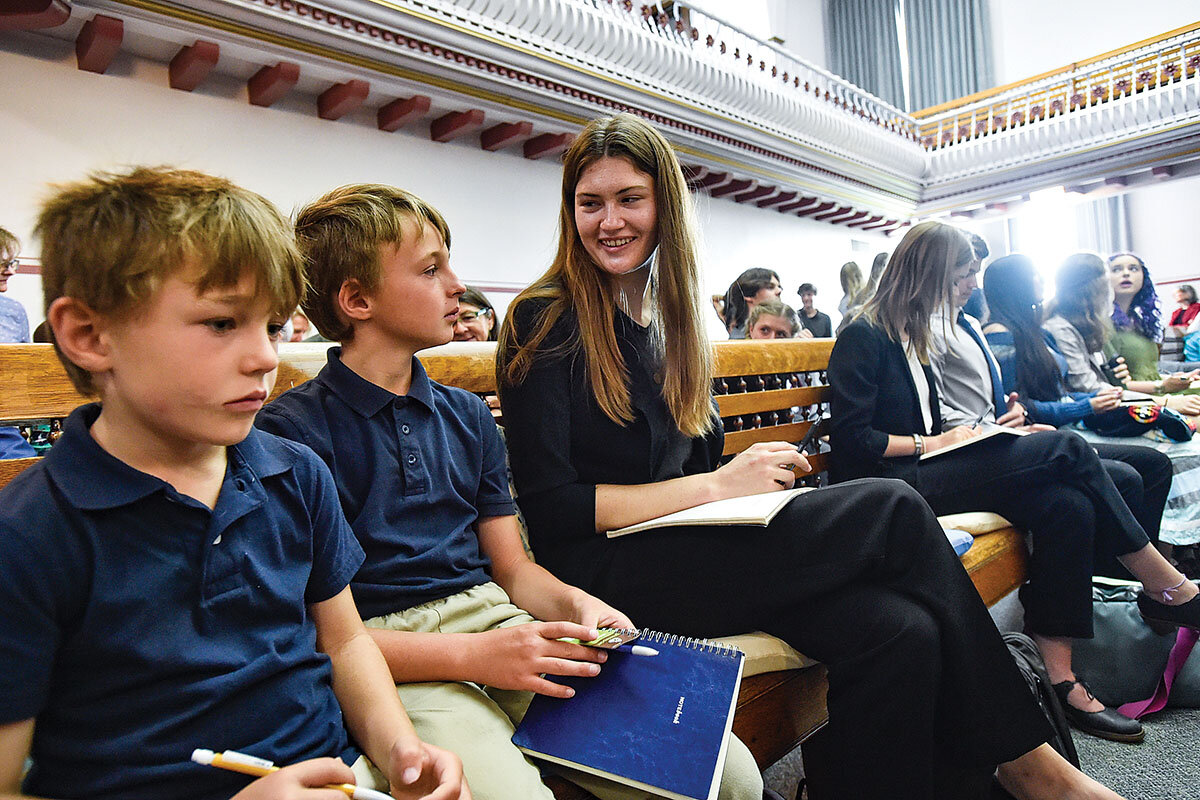
They and their fellow plaintiffs were represented by an Oregon-based law firm called Our Children’s Trust, which has helped young people across the country bring constitutional climate cases.
Opposing them was the state of Montana, represented by an attorney general whose spokesperson had called the lawsuit “outrageous” and “political theater” – a case of well-intentioned children exploited by an outside interest group.
For the better part of the next two weeks, the two sides presented their cases.
Then youth and legal experts waited anxiously for the judge’s decision. Held v. Montana, many said, was a crucial moment in what they saw as a legal transformation building around the world. Members of the Climate Generation – as we’re calling the cohort born since 1989, when the world became both climatically unstable and increasingly focused on children’s rights – were working to define what it meant to have rights as a young person. And in particular, they were working to define what it meant to have rights while looking at a future that scientists agree will be shaped by what older people have done to the atmosphere. A ruling in Montana could dramatically impact this global effort.
“The Montana case is incredibly important,” says Shaina Sadai, the Hitz fellow for litigation-relevant science at the Union of Concerned Scientists. Young people involved with climate action, she adds, “are very internationally connected. They are very much in touch with each other. ... A win anywhere for any of them is a win for all of them. It’s that global youth solidarity.”
Which is why Dallin Rima, a 19-year-old plaintiff in a different climate lawsuit, turned up the radio when he heard that Montana District Judge Kathy Seeley had released her verdict.
Mr. Rima is part of a group of Utah youth who have sued their state, arguing that its promotion of fossil fuels violates their constitutional rights to life, health, and safety. He’d been following what was going on in Montana, the same way young climate plaintiffs from Oregon to the South Pacific to Portugal had been keeping track. While he knew firsthand about the challenges of the legal system, about the delays and disappointments, he had allowed himself to hope.
He was driving to his grandmother’s house outside Salt Lake City, listening to NPR, when the news came on. It was a good thing nobody else was in the car, Mr. Rima says. Because as he listened to the newscast, he began to “express himself,” as he puts it. Loudly.

The judge had ruled in the young plaintiffs’ favor. Specifically, this meant that Montana policymakers had violated the young people’s constitutional rights by ignoring the climate impacts of their energy decisions. But Mr. Rima understood that there were far broader implications.
By siding with the young Montanans, Judge Seeley explicitly connected the right to a clean environment with the right to a stable climate. She gave a judicial stamp of approval to climate science. And she proved that, in the face of what many young people see as politicians’ ineptitude in addressing climate change, the judiciary is a branch of government that might still be able to protect their futures.
“I’ve learned not to get my hopes up. But I was just shocked, ecstatic to hear that they had won,” Mr. Rima says. “It was a really powerful moment. ... It feels like our work isn’t in vain.”
Children’s rights and climate science
By the time the young people in Montana first filed their complaint against the state in 2020, the number of climate cases worldwide was already starting to increase dramatically. This was in part an offshoot of the growing youth activism around global warming during the late 2010s, with groups such as Greta Thunberg’s Fridays for Future beginning to stage school climate strikes and other protests around the world.
But the increase in these cases was also a reflection of two big developments: the evolution of children’s rights and of the science of climate change.
In 1989 – the beginning of the Climate Generation – world leaders agreed to the United Nations Convention on the Rights of the Child (UNCRC), an effort that both defined “children” as those under the age of 18 and called on nations to protect children’s access to things like safety, education, and freedom of movement. (Every country in the world except the U.S. has ratified this convention.)
Meanwhile, during those same years, there was a growing understanding of – and attention to – the problem of climate change.
In many ways, the youth effort to bring climate concerns into the judicial system was a merging of these two understandings – that they had rights, and that climate change was threatening those rights.
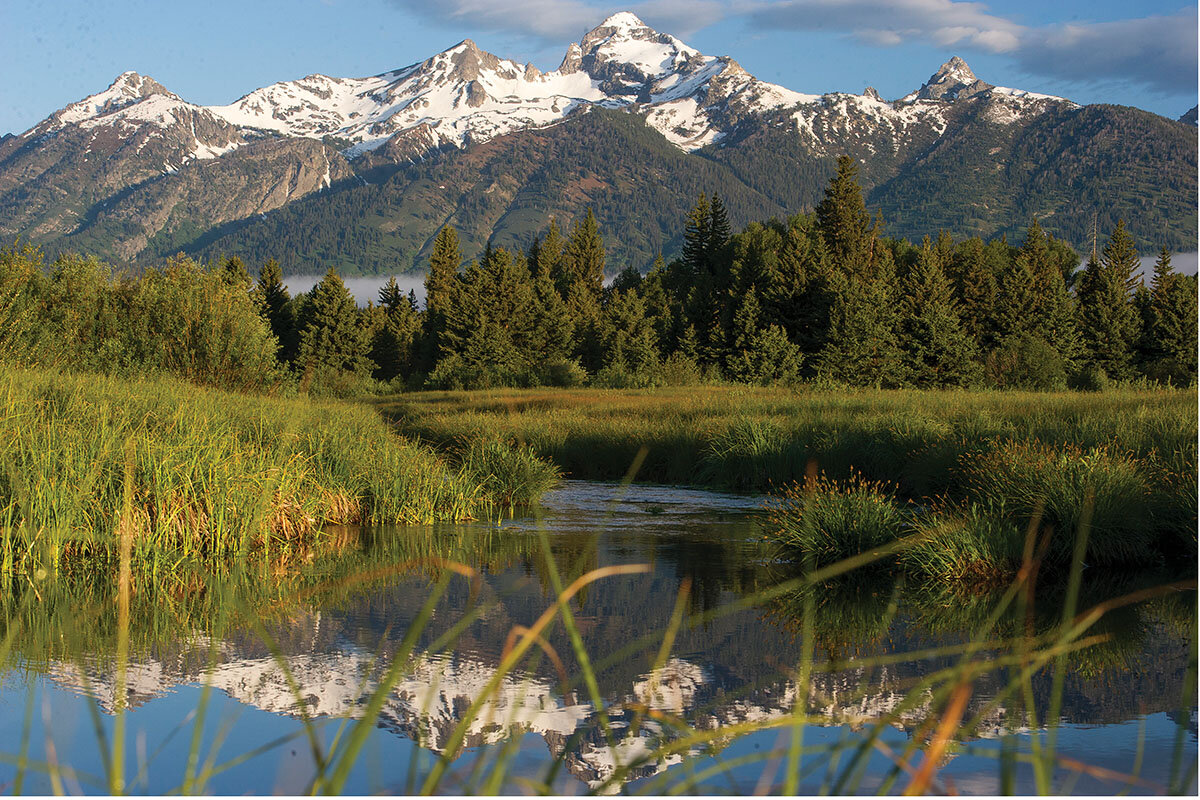
At the heart of this argument was a cruel scientific fact: The situation was only going to get worse, and young people were going to disproportionately face the consequences.
Global warming is cumulative. In other words, heat-trapping gases don’t just go away; they hang out in the atmosphere for centuries. So today’s emissions are joining those of the 1900s, trapping even more solar heat inside the Earth’s atmosphere. This means that some amount of global heating is inevitable, scientists say. Regardless of how the world adjusts today, those people born at the turn of the century will live in a world fundamentally environmentally different from what those born in 1960, or even 1980, experienced.
But how different is still very much a question. Scientists have modeled different scenarios of warming, based on whether or not the world quickly ramps down greenhouse gas emissions. And the difference in what it will mean to live on Earth is profound.
This is not only because the average temperature will get higher the more greenhouse gases go into the air. For such a life-giving planet, Earth’s environmental systems, which include everything from ocean currents and storms to heat waves and ice flows, are delicately balanced. With every added fraction of a degree comes the potential for a cascade of climatic impacts, from the sort of heat waves that cooked the Northern Hemisphere this summer to the supercharged storms that have battered everywhere from Florida to Mexico to Mozambique. A rapid decrease in greenhouse gas emissions today would make a tremendous difference in the severity and frequency of climate catastrophes in the future – and, by extension, the quality of life for young people as they reach adulthood.
And yet, the world has not lowered its greenhouse gas emissions. It has done the opposite.
“Half of all emissions have happened since 1990,” says Dr. Sadai of the Union of Concerned Scientists. “It’s not only getting worse, but it’s getting worse at a faster and faster rate.”
This is not, young people know, because policymakers have been unaware of the consequences. For the past 20 years, politicians around the world have been making – and then breaking – promises about addressing what they have all agreed is a dire global situation.
In 1992, the United Nations created what was called the U.N. Framework Convention on Climate Change. It was basically a statement that recognized both the reality as well as the danger of climate change, and a commitment to stabilize greenhouse gas concentrations, with developed countries leading the way. Over the next years there were more gatherings and pledges, such as the Kyoto Protocol in 1995, which legally bound developed countries to reduce their emissions, and the Paris Agreement in 2015, when countries again pledged to really get serious about the problem.
To Alex Loznak, who was growing up during those years on a southern Oregon farm that’s been in his family for generations, all of this was a sign that when it came to his future, he could not trust policymakers.
The legal victory “lights a path forward”
Mr. Loznak, now 26, had become interested in environmental issues and climate change early, first as a home-taught elementary schooler, and then as an older child who noticed what the rising temperatures and unpredictable weather were doing to his family’s hazelnut and plum trees. By the time he went to high school in Roseburg, Oregon, he was leading environmental and climate awareness clubs, and was monitoring what elected officials and diplomats were saying and doing – or not doing – about climate change.
“I remember watching a few really big policy failures to put together a coherent response to climate change,” he says. “One of those was [the U.N.] Copenhagen climate change summit, which people had expected to be this huge global turning point. There was going to be a treaty to deal with climate change, and every nation was going to step up to the plate. And that for the most part fell apart. This was in 2009.”
He also remembers watching as Congress tried – and failed – to pass a federal law to deal with climate change.
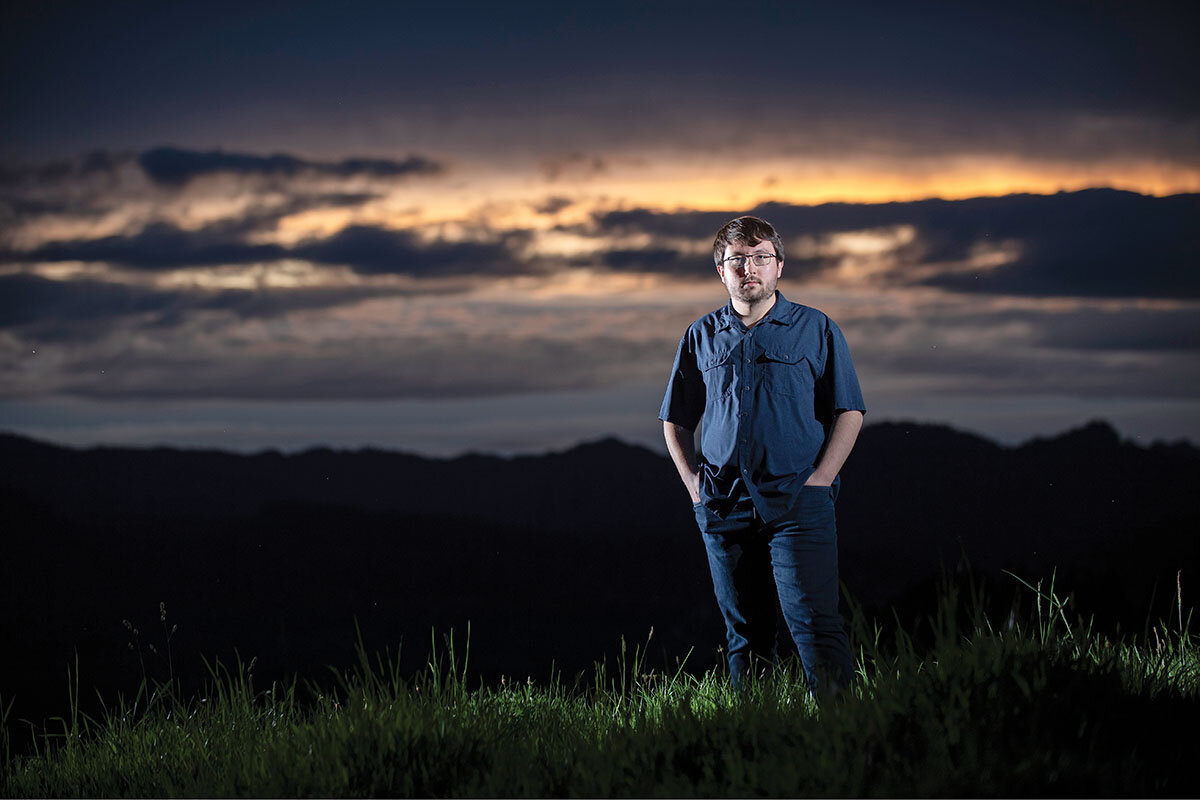
“It started to get me thinking about what would be some other pathways to deal with this climate change problem,” he says.
A few years later, he came across the writings of a legal scholar named Mary Christina Wood. She had written a book called “Nature’s Trust,” which argued that traditional environmental law – typically focused on regulations and piecemeal enforcement – failed to live up to modern-day ecological problems. She proposed using the public trust doctrine, a legal principle establishing that certain natural and cultural resources belong to the public under government stewardship, as a way to tackle big environmental issues like climate change.
It was a novel approach, and one that had a lot of legal pushback. But Mr. Loznak was fascinated. Not long after learning about Dr. Wood’s work, he heard about Our Children’s Trust, which was looking for plaintiffs in Oregon to join a climate change case against the federal government – and was using theories similar to the ones he had read about.
Maybe, he thought, a court case would be the way to get real action on climate change.
He wrote to the lawyers and eventually became a plaintiff in Juliana v. U.S., the first youth climate case to move forward against the U.S. government. Mr. Loznak and other plaintiffs filed their first complaint in 2015.
They are still involved in legal proceedings and have mostly faced setbacks. Climate, the courts kept saying, was not a judicial matter.
So Mr. Loznak, too, was interested in what would happen in Montana. He followed the news reports and press releases about the trial. When he heard about the judgment, he felt “gratified,” he says, but as much for what he saw as judicial functionality as for the win itself.
“It was pretty clear that the plaintiffs put on a much stronger case than the government did,” he says. “I see [the judgment] as something that lights a path forward, on the state level and on the federal level. I hope it will put to bed this notion that cases like this are not serious, or are just publicity stunts or political statements. A lot of people have treated them that way. What we see now is that these are serious legal cases and they can result in judgments against government actors.”
Rule of law, not a debate
David Schwartz always thought it was a serious legal case. An environmental lawyer born in 1990 and “into an unstable climate,” as he puts it, he joined Our Children’s Trust as a staff attorney in 2021 and soon began working on the Montana case.
He noticed that his clients, younger members of the Climate Generation, were far more aware of the heating world than he had been as a child growing up in Southern California.
“I wasn’t going to climate marches. I wasn’t signing on to petitions to stop this or that pipeline or something. It just wasn’t on my radar,” he says. And that’s how it should be, he says. “It shouldn’t have to fall on [children]. There are adults in the room, and key decision-makers who should be charting a sustainable path for humanity.”
But as a lawyer, he also recognized that young people, with arguably the most to lose from the business-as-usual approach to climate change, might be in the best legal position to do something about it. It seemed to him to be an obvious case of inequity and equal protection rights. Science increasingly showed that one group – adults – were making decisions that clearly harmed another group: young people. For him, it was an obvious matter for the judiciary.
“Courts are the bodies that have the ability to shift the meaning of the law as social norms and scientific understanding advance,” he says. “In legislative or executive politics, bluster and compromise and not sticking with the cold hard facts can carry the day. But ... in the court of law, facts matter.”
Indeed, in the Helena courtroom, the facts of climate science came across as rock-solid: The world is getting hotter, humans are largely responsible, and the heating is causing a slew of climatic disruptions, from the wildfires that choked Grace’s soccer practices to the droughts that starved Rikki’s cattle.
For many years in the U.S., the science of global warming has been debated in the public sphere – in speeches, on social media, and so on – where critics and skeptics can present their own theories and argue with scientists. But in a trial, speculation and hearsay are against the rules. Statements are subject to cross-examination. And political or economic pressure is not supposed to sway a judge’s opinions.
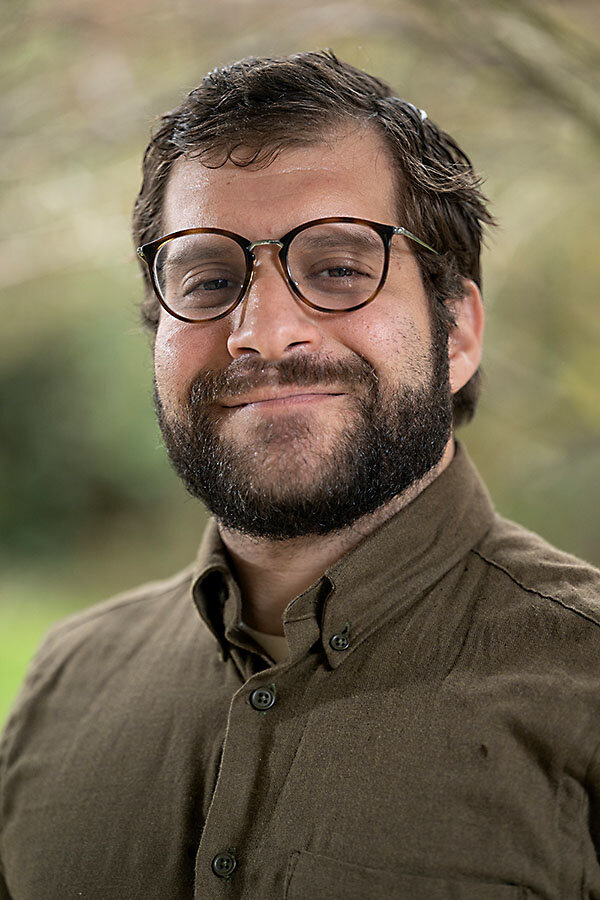
In some ways, says Michael Gerrard, founder and faculty director at Columbia’s Sabin Center, which keeps a database of climate litigation, this was one of the most important aspects of Held v. Montana.
“Science deniers have long had a political platform,” he said in an interview on the eve of the trial. “But they’ve mostly tried to stay out of court because they realized they were vulnerable.”
The state ended up not calling to the stand a scientist skeptical of mainstream climate research. Instead, it focused on the argument that Montana shouldn’t be held responsible for a global problem, and that climate issues were legislative matters, not legal ones.
“What we heard in plaintiffs’ case was not justiciable controversy, but rather a weeklong hearing of political grievances that properly belongs to the Legislature, not a court of law,” said Assistant Attorney General Michael Russell during his closing statements.
Later, the attorney general’s spokesperson, Emily Flower, put out another statement.
“Montanans can’t be blamed for changing the climate,” she said. The case, she added, was a “taxpayer-funded publicity stunt.” The government has said it will appeal.
Collective responsibility
Climate change has been called a classic “tragedy of the commons” – a situation in which individuals act in their own logical self-interest and nobody is doing anything against the law. But taken together, the individual behaviors are catastrophic to the community.
Young people pushing for the courts to weigh in on climate change say that the legal system has the ability to reverse that tragedy, and make explicit a collective responsibility. A group of law students from the University of the South Pacific in Fiji, for instance, is spearheading an effort to have the International Court of Justice connect climate action to human rights. A case brought by six young Portuguese plaintiffs, which had a hearing in the European Court of Human Rights earlier this year, says 32 countries, including their own, are responsible for the extreme weather they’ve experienced in Portugal.
And in the Montana courthouse, when a state attorney asked one expert, Nobel Peace Prize-winning climate scientist Steven Running, whether young people around the world could also blame Montana for impacting their climate, the witness shrugged. Sure, he said. That’s how the atmosphere works. It doesn’t take away from the case.
“There’s a question of, how do we recalibrate our rules, our set of laws, our constitutions to the physical realities of our planet?” says David Orr, emeritus distinguished professor of environmental studies and politics at Oberlin College in Ohio. “It’s time to rethink what law is on a planet with a biosphere.”
That’s true even beyond the youth constitutional cases. In the U.S., the number of climate cases has increased dramatically, with some 2,180 underway in 2022, compared with 884 in 2017, according to the Sabin Center. Most of those cases don’t involve children’s rights; they are nonprofits suing corporations for alleged “greenwashing,” municipalities suing oil and gas companies, and individuals demanding regulation enforcement, among other matters.
Still, Robert Cox, an environmental lawyer who heads Suffolk University Law School’s Environmental Law & Policy Clinic in Boston, says that this doesn’t mean the cases don’t involve the Climate Generation. His students, and other young lawyers he sees, are particularly attuned to climate change, and are working within what he calls the “nitty-gritty” of the legal system to shape existing rules and legislation to apply to a new, heated reality.
“What I see in the younger attorneys that I practice with ... is this embedded view that climate change is an issue and we have to deal with it in one way or another,” he says. “And it dovetails with what is happening with clients, where everything they do or touch connects to climate.”
Not politics or activism, just the law
Ms. Gibson-Snyder watched the whole Montana trial from her seat in the courthouse.
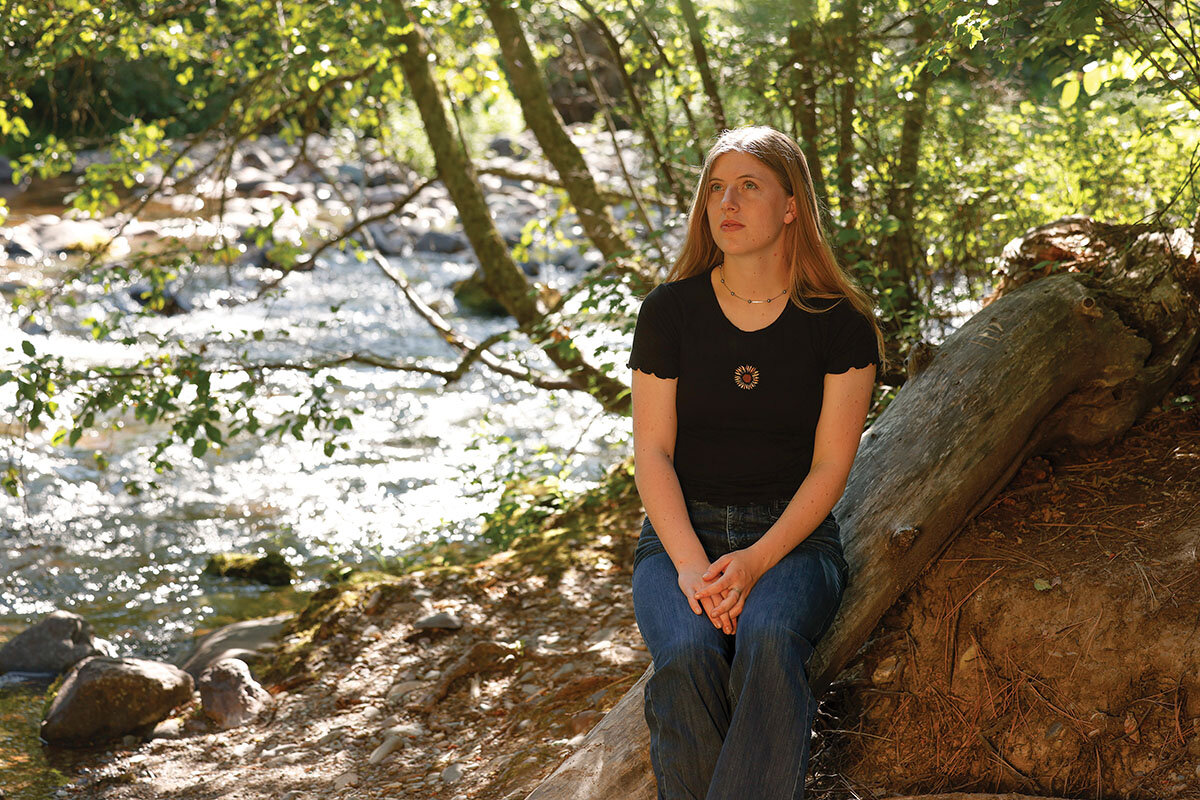
She had joined the lawsuit when she was 16 and was now in the summer between her freshman and sophomore years in college. But that week in June was the first time that she had spent much time with her co-plaintiffs. While they had met each other over screens, they lived across Montana and ranged in ages. Now they were staying at the same hotel, where they ate together and watched movies like “Legally Blonde” – “in keeping with the theme of the week,” she says with a laugh. As they went to the courthouse together, they walked by supporters waving signs encouraging their work.
When the trial started, she was riveted, even as she sketched in her notebook, she recalls. She had learned by then to keep her face impassive when she heard the state’s arguments: that it wasn’t Montana’s job to fix climate change for the world, that the youth plaintiffs were misguided, that the whole case was a political sham. But that didn’t mean those words didn’t bother her.
“It’s hard,” she says. “It’s really, really frustrating. ... I have a whole lot of emotions about climate change. And you spend all this time and energy trying to get other people, especially our government, to work with us, and finding such resistance really exacerbates the emotional intensity of everything we feel about climate change, like that anxiety, that fear, the loss of freedom. It’s so frustrating to have the government actively working against your best interests.”
It is also frustrating to have her own state government label her as part of some sort of outside activist group.
Ms. Gibson-Snyder has deep Montana roots. A great-great-great-grandmother came here on the Bozeman Trail; her family worked with gold miners. Although she grew up in liberal Missoula, she knows this city is an outlier in her red state.
But she also believes that deep care for the environment goes across party lines here. The history of Montana is complicated, she says – one of extraction and environmental degradation, but also of stewardship and connection to the outdoors. Because the state Constitution explicitly protects citizens’ right to a healthful environment, Ms. Gibson-Snyder doesn’t see her lawsuit as political, or really even as activism. It is simply challenging governments to do what they are supposed to do: protect their people.
“That’s what a democracy is, right?” she says.
The verdict came shortly before she returned to the East Coast, where she attends Yale University.
“Reading this landmark decision, my overwhelming emotion is relief,” she wrote in a statement she emailed to the Monitor that night. “There is still hope. Hope for me and the other youths’ futures, hope for Montana and the places we love. Hope for the rest of the world to follow suit. ... Let’s keep moving forward to ensure Montana’s policies – and policies around the country and world – are supportive of a healthy and prosperous future and consistent with protecting our constitutional rights.”

After 658 days in jail, Kashmir journalist Fahad Shah shares his story
Fahad Shah is free. The Monitor contributor from Kashmir left jail last week, as we mentioned last Monday. For years, we’ve been writing about the Indian government’s crackdown on journalists. Fahad’s story is what it looks like: a cell too small to stretch out, a voice silenced, and a life changed.
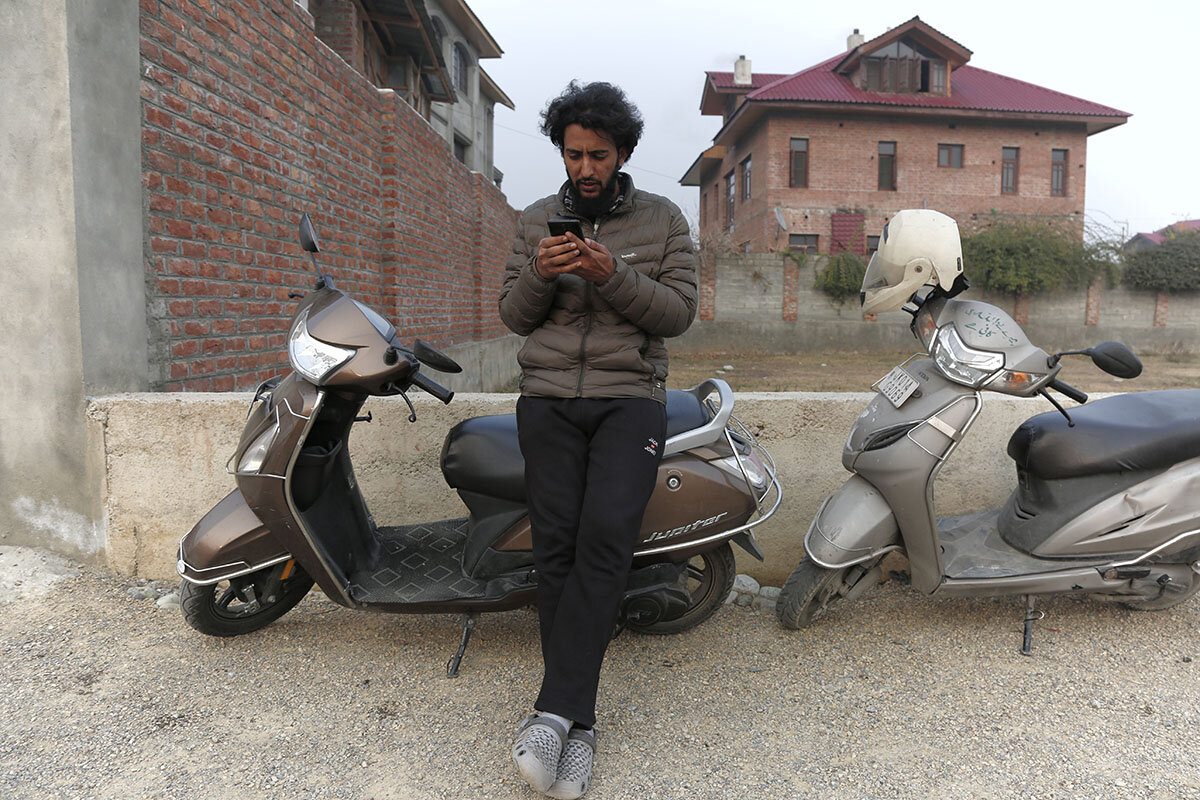
- Quick Read
- Deep Read ( 5 Min. )
Relatives, friends, and fellow journalists have been thronging Fahad Shah’s home since his release from jail.
“It is really moving to see so many of my colleagues,” says Mr. Shah, a prominent Kashmiri journalist and contributor to The Christian Science Monitor, who spent the last 21 months behind bars. “It made me feel I have not been forgotten.”
Indian authorities charged Mr. Shah with “glorifying terrorism” and publishing “anti-national content,” as well as receiving foreign funds illegally. After he secured bail in one case, authorities would arrest him for another – what rights groups describe as a “revolving-door detention.” Last week, a court found insufficient evidence to try Mr. Shah on terrorism charges and granted the beleaguered editor bail, stating that he did not pose a “clear and present” danger to society.
Press freedom advocates have welcomed Mr. Shah’s release, demanding that all remaining charges against him be dropped and the blockade on his popular news portal, The Kashmir Walla, be reversed.
“Fahad’s ordeal reflects the challenges journalists in Jammu and Kashmir endure for doing their work,” says Kunal Majumder, India representative of the Committee To Protect Journalists. At least four other Kashmiri journalists remain incarcerated, including Sajad Gul, a Kashmir Walla trainee who was arrested in January 2022.
After 658 days in jail, Kashmir journalist Fahad Shah shares his story
On a chilly winter afternoon, Fahad Shah stares at the wilted flowers in the walled compound of his home on the outskirts of Srinagar.
“It feels different to be free,” he says. “I wake up and see my family, and it feels good.”
Mr. Shah, a prominent journalist from Kashmir and a contributor to The Christian Science Monitor, was released on bail last week after being jailed for 658 days. Indian authorities charged him with “glorifying terrorism” and publishing “anti-national content,” as well as receiving foreign funds illegally. The High Court of Jammu and Kashmir and Ladakh, however, found insufficient evidence to try Mr. Shah on terrorism charges, and granted the beleaguered editor bail.
Global media watchdogs and journalists from the region view Mr. Shah’s experience as part of a wider crackdown on media in Indian-controlled Kashmir, where authorities have been accused of intimidation, harassment, and the systematic targeting of critical voices. Press freedom advocates have welcomed Mr. Shah’s release, demanding that all remaining charges against him be dropped and the blockade on his popular news portal, The Kashmir Walla, be reversed.
“Fahad’s ordeal reflects the challenges journalists in Jammu and Kashmir endure for doing their work,” says Kunal Majumder, India representative of the Committee To Protect Journalists (CPJ). “We also call for the immediate release of journalists Aasif Sultan and Majid Hyderi, who face similar charges and are in preventive custody even after being granted bail by the court.”
“Authorities in Jammu and Kashmir must stop this trend of criminalizing journalists and be tolerant of critical and dissenting voices,” he adds.
Kashmir’s ongoing media crackdown
After his initial arrest in February 2022, Mr. Shah was held in a series of police facilities and jails across the region. After he secured bail in one case, authorities arrested him for another. When he secured bail in that too, they slapped him with the Public Safety Act, a draconian law that allows a person to be held in jail without trial, though the high court quashed that case months ago. He was eventually booked under four different cases in what rights groups describe as a “revolving-door detention.”
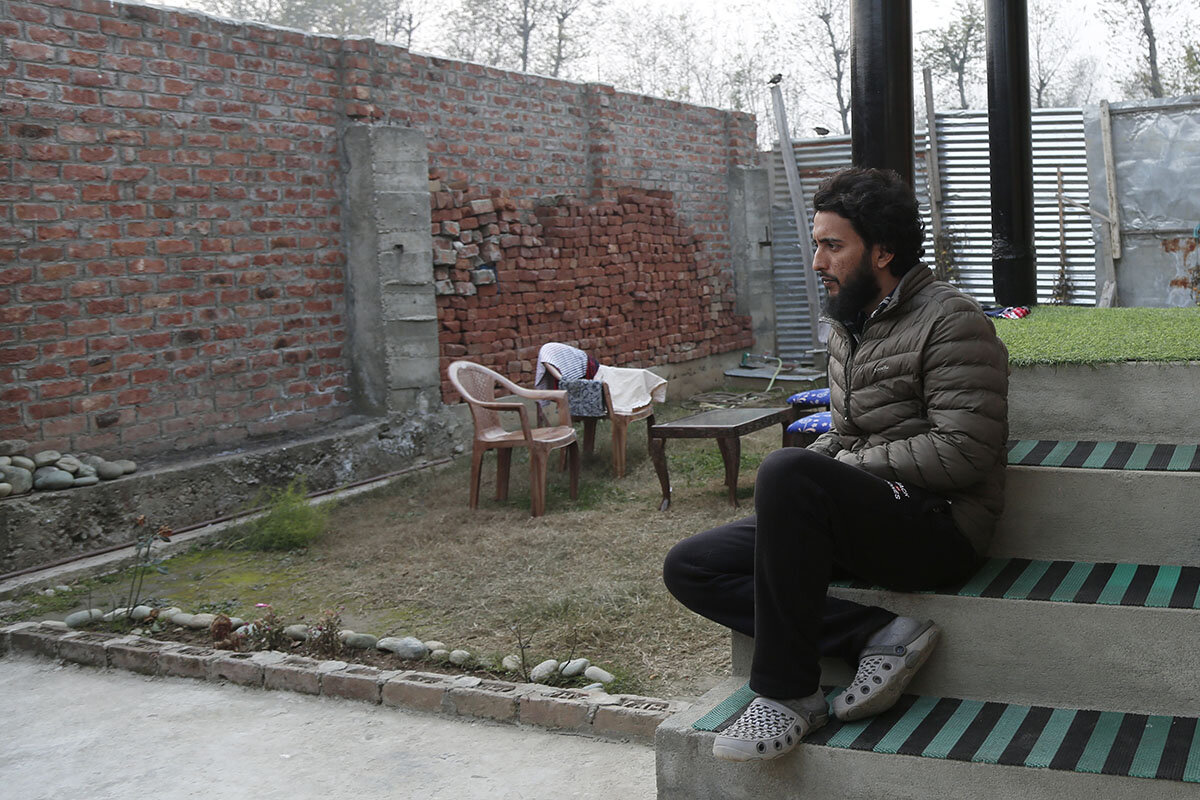
Mr. Shah says this coordinated effort to keep him behind bars was crushing.
“Every time I would feel like [I was] getting released, something new would happen,” he says.
Last week, a court declared that local law enforcement lacked evidence to prove charges filed under the Unlawful Activities Prevention Act, a stringent anti-terror law, and that Mr. Shah did not pose a “clear and present” danger to society.
Keeping him in jail “would mean that any criticism of the central government can be described as a terrorist act because the honor of India is its incorporeal property,” states the court’s bail order. “Such a proposition would collide headlong with the fundamental right to freedom of speech and expression enshrined in Article 19 of the constitution.”
Indeed, these freedoms are under sharp threat in Kashmir.
It has never been easy for journalists to operate in the heavily militarized Himalayan region, but under Indian Prime Minister Narendra Modi, Kashmir – and India more broadly – has experienced a significant press freedom backslide.
After the Modi government stripped the region of its limited autonomy and imposed a monthslong communication blackout in 2019, the crackdown on Kashmiri journalists intensified. Many have been questioned by police, had their homes and news offices raided, been forced to reveal sources, and been barred from leaving the country. In August, authorities blocked access to The Kashmir Walla’s website and social media in India, effectively shutting down one of the region’s last independent media organizations without explanation.
Today, there are at least four Kashmiri journalists who remain incarcerated.
Days after Mr. Shah’s bail, a court quashed the Public Safety Act charge against Sajad Gul, a Kashmir Walla trainee who has been in jail since January 2022. Mr. Gul has yet to be released.
Another journalist, Irfan Mehraj, was arrested in March under terrorism charges, and Mr. Sultan and Mr. Hyderi, as mentioned by India’s CPJ representative, also remain imprisoned.
Adjusting to life outside jail
Relatives, friends, and fellow journalists have been thronging Mr. Shah’s home since his release.
“It is really moving to see so many of my colleagues,” says Mr. Shah. “Everyone was hugging, and there were these tight hugs, and people hugging twice, thrice; it made me feel I have not been forgotten. ... There are people who have been waiting to see me.”
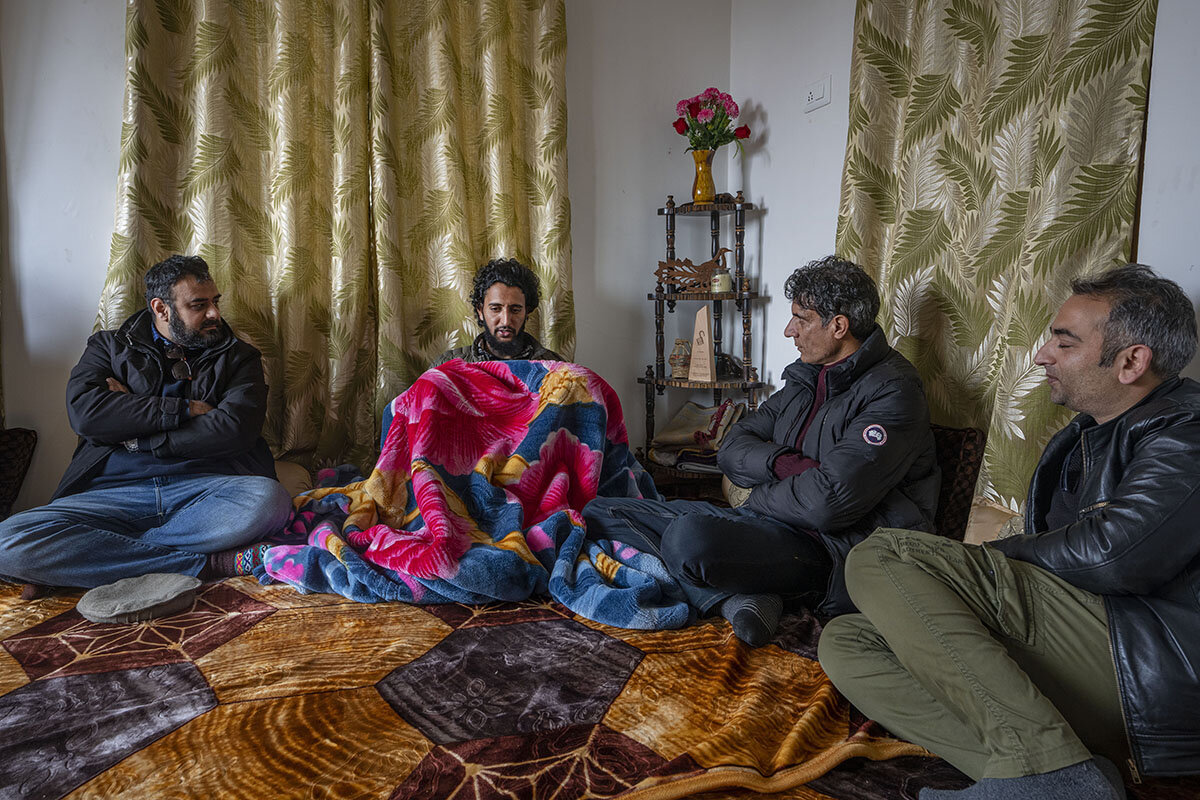
They discuss the state of journalism, fill him in on who got married while he was in jail, and crack jokes to lighten the mood. And when Mr. Shah describes his time in jail, legs covered under a blanket, everyone in the room listens intently.
“Prison breaks you bit by bit,” he says.
He describes his “worst days” of incarceration during the initial months of his arrest, when he was confined to a small cell where he couldn’t stretch out his body properly.
“I was not in touch with my family. I don’t know what was happening outside that cell,” says Mr. Shah, who looks frail and fatigued, with dried lips and dark circles under his eyes. “I was exhausted and mentally tortured. ... I used to get these hallucinations and imaginations about what must have happened at home.”
Those who know him well say he looks shattered. But it wasn’t all so painful.
After being sent to Kot Bhalwal jail in June 2022, Mr. Shah says he made peace with his new reality and tried to become part of the jail community.
“There are prisoners of different kinds and [from] different areas,” he says. “Only inmates are there for each other in happiness and gloom.”
He also had time to read lots of books, mostly about his favorite subject: culture and media.
“Other than that, I would read newspapers. But there wasn’t much to do,” he says.
All the while, Mr. Shah says he felt like he was becoming a character in an article. The questions he so often asked as a reporter – about how long a person had been in prison, the charges against them, and what it was like being targeted by the state – were suddenly relevant to his own life.
“There was a point when I was writing about these people, and then I became one of those people,” says Mr. Shah. “I became the character of my own story. Now it was about me.”
Mr. Shah knows that spending 21 months in jail has changed him as a person and as a journalist, but he’s not sure what comes next.
While longing for his release in jail, he made plans about everything, from the kinds of food he was going to eat when he got out to when he would return to work. Now that he is free, he says he feels out of place.
Right now, his priority is to consult doctors about his mental and physical state, he says. “I’m still trying to figure out things.”

On farm near Gaza, thinking of what tomorrow holds
What happens next in the Middle East will be significantly decided by the people of Israel. In tomato fields not far from the Gaza border, Israelis rally to help farmers disrupted by the war – and find themselves thinking about how that future might take shape.

- Quick Read
- Deep Read ( 5 Min. )
The brutal Hamas attack on Israel on Oct. 7 sent thousands of migrant farmworkers, mostly from Thailand, fleeing back home. Farms near the Gaza Strip that normally grow 75% of Israel’s vegetables and nearly a quarter of its fruit were abandoned, their harvests threatening to rot.
But civil society groups have come to the rescue, organizing volunteers to harvest fruit and vegetables, milk cows, and plant winter crops.
On a recent autumn morning, some three dozen such volunteers, mostly city dwellers and professionals, were picking tomatoes on a cooperative farm just 3 miles from the Israel-Gaza border, within earshot of the war.
They said they were doing it as a way of making themselves useful in a crisis, and of showing solidarity with farmers whose businesses were suffering. And as they worked, they talked – about the present, and the future.
A number of the volunteers were liberals, with hopes of a lasting peace with their Palestinian neighbors. Those hopes have taken a severe blow. But the temporary workforce is looking ahead nonetheless.
One volunteer had done a previous day of labor, planting broccoli for a winter harvest. “Picking tomatoes is about now, and that’s good,” he said. “But planting broccoli, that’s about the future.”
On farm near Gaza, thinking of what tomorrow holds
Inside the sand-colored, 3-acre greenhouse less than 3 miles from the Israel-Gaza border, within earshot of the war, an army of volunteers snips garlands of red-ripe tomatoes from towering vines, placing them in bright pink plastic crates.
As they peruse the crop for blemishes and fill their crates, the city dwellers-turned-farmworkers say the day’s labor gives them the sense that they are doing something to show solidarity with fellow Israelis in an area devastated by the brutal Hamas assault that killed 1,200 people on Oct. 7.
“I found myself at home on Fridays and worrying – worrying about my children, worrying about what’s happening with the war – so I decided, much better to do something useful,” says Osnat Ben Soussan, a Jerusalem tech industry worker wearing a big smile and shorts as she gets down to her third stint as a farmworker.
With all three of her children and a son-in-law fighting in the war, she spent a lot of time following events.
Then public service spots started appearing on TV seeking volunteers for farmwork. “I thought, there it is; that’s something I can do,” she says.
The three dozen tech workers, teachers, engineers, and others picking tomatoes “are here to help me save my crops,” says Idan Alon, who works on the cooperative farm. “But maybe also they are here, after what happened, to help us keep agriculture going in this part of Israel.”

“I need to do this”
Within days of the Hamas rampage, a region that furnishes 75% of Israel’s domestically produced vegetables, 20% of its fresh fruit, and nearly 10% of its milk was deteriorating into a wasteland. Thousands of acres of crops ready for harvest risked rotting; dairy cows went without milking; chickens succumbed to heat and lack of water.
The thousands of migrant farmworkers who normally tended the fields, mostly from Thailand, had fled home. Some were killed or taken hostage by Hamas.
But then to the rescue of hundreds of southern Israel farmers like Mr. Alon came civil society groups such as HaShomer HaChadash (The New Guard), organizing members to harvest fruit and vegetables, milk cows, and plant winter crops.
It is HaShomer HaChadash’s job to strengthen Israelis’ ties to the land. But even groups with nothing to do with agriculture kicked in. The pro-democracy group Brothers in Arms, for example – known for organizing opposition to government plans for judicial reform – says that online requests for volunteers posted by its offshoot, Brothers in Farms, are oversubscribed within minutes.
Amir Malkin, a scoutmaster from Kadima, a town north of Tel Aviv about three hours’ drive from Moshav Yated, was quick to organize Scouts’ parents to make weekly trips to southern farms.
“Many of us here have been in the [military] reserves. With our Scouts, we organize service activities, so when [Oct. 7] happened, it just was natural to organize our parents to get involved,” says Mr. Malkin, a civil engineer. “I feel I need to do this.”

In the greenhouse, conversations quickly turn to service at a time of national crisis, and to concerns about the Israel that will emerge from the current war against Hamas.
High school chums Asi Adaki and Mati Fishbein rib each other just like the old days, disputing who is working faster and who is delivering the more marketable crate of tomatoes.
As he blares the Eurythmics’ “Sweet Dreams” and other ’80s classics over a speaker, Mr. Fishbein cuts his friend a momentary break and turns serious.
“I was an officer in the army for 25 years. I was the guy who delivered the message that your son had been killed in battle,” says Mr. Fishbein, now a real estate agent.
“That same sense of service you get in the military, you’re seeing it here. This is the power of the Israeli people,” he says. “In times of war we are trying to help each other – and then after the war,” he adds, “we can go back to fighting each other.”
Feeling alone, showing solidarity
His buddy Mr. Adaki pulls his head out of the vines and stops working long enough to disagree. “No, I think this time will be different,” says the El Al airline flight crew member. “For one thing, I really feel we don’t have any partners [in the region] anymore, so we Israelis will be on our own.”
That is a worry also for Elizabeth Blum, a math teacher of at-risk adolescents in Jerusalem. Social activism has always been a part of her life; her parents started their married life on a left-wing kibbutz. But she says the brutality of the Hamas attacks shook her to her core and left her thinking differently about the future.
“I was a peace activist,” belonging to the Women Wage Peace group, she says. “I really believed in it.” But then the atrocities of Oct. 7 occurred. Most searingly, a longtime friendship with an Arab woman dating back to university days collapsed into mutual recriminations and accusations about which side was more responsible for causing a terrible war.
“Now I really don’t believe peace is possible. I lost all trust in any person, any desire for peace on the other side,” she says, adding wistfully, “I’m done.”
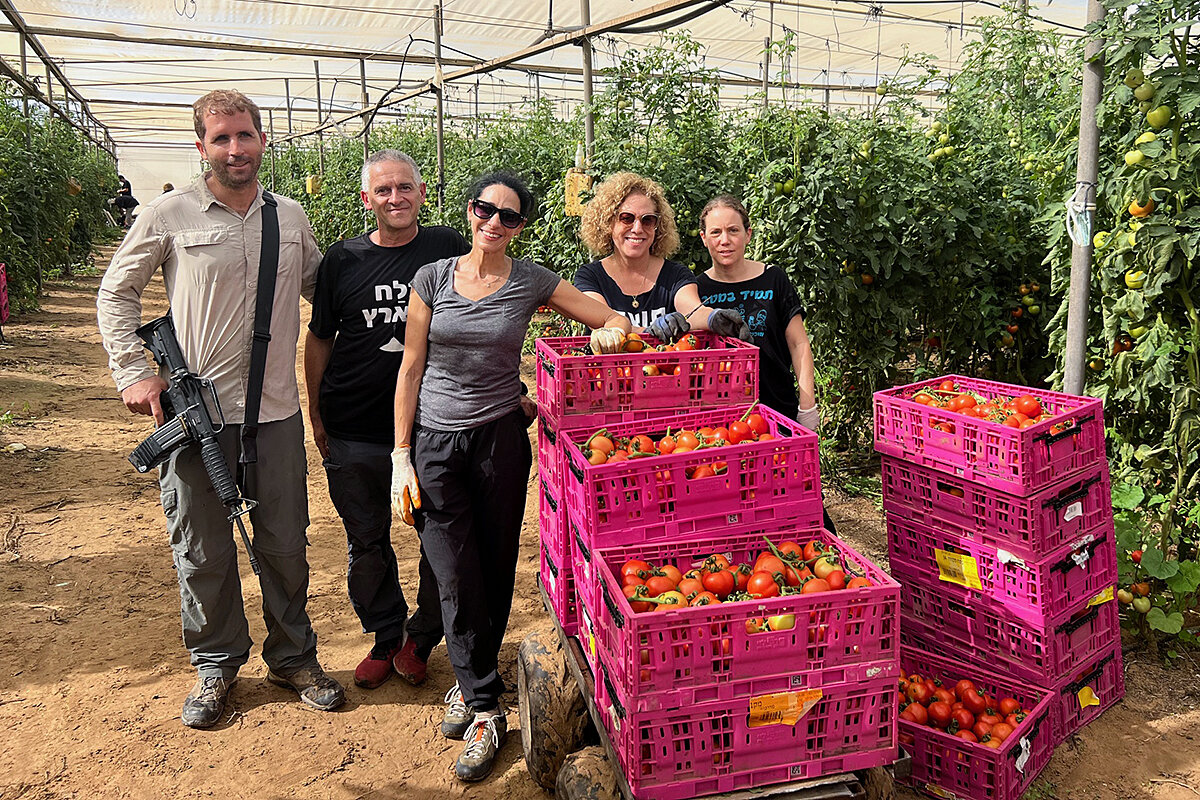
Mr. Alon, the farmer, says his focus is on getting his tomatoes off the vine and to Israel’s markets within a day or two. But he, too, finds himself thinking about the future, and whether agriculture will ever again thrive near the Gaza Strip.
“People have to feel secure. They can’t do a good job with their farms or whatever work they do if they are worrying every day their family might come under attack,” he says.
Unless they feel safe, Israelis won’t come back to the kibbutzim and the farming towns around Yated, he says, and the foreign farmworkers – he had 20 on his farm – won’t return to Israel.
“And if that happens, if we do not stay here, the border will come more inside,” he says, gesturing westward toward Gaza. “We are already a small country,” he adds, “but what we see around us is that Israel could get smaller.”
As Oren Klimkel, one of the volunteers Mr. Malkin brought, stacks crates of tomatoes at the end of the day, he, too, speaks of the Israel that will come out of this war. And he is hopeful.
“It feels like we are doing good for the country now, but also that this experience will have some positive influence even after” the war, he says.
On his previous day of labor at the Alon farm, he planted broccoli for a winter harvest, Mr. Klimkel says. “Picking the tomatoes is about now, and that’s good. But planting the broccoli,” he adds, “that’s about the future.”

Books
In November’s 10 best books, humility changes lives
It takes humility to admit one’s shortcomings. The desire to right past wrongs animates many of the characters in our 10 picks for this month. For everyone from a U.S. Civil War general to a 20-something Londoner, self-reflection offers insight.

- Quick Read
- Deep Read ( 3 Min. )
-
By Staff
A thread of humility weaves through many of November’s 10 best books.
In fiction, U.S. Gen. Ulysses S. Grant examines his Civil War career and tries to make peace with his failures, with the help of his wife.
Two American women look back on their years in South Vietnam, asking whether their behavior toward the Vietnamese people was problematic.
A single, 20-something Londoner is catapulted into the future and learns to curb her impatience to get to the “good part” of her life.
Reckoning with the mistakes of the past allows these characters to set a more authentic course for the future.
And in nonfiction this month, a determined wildlife officer goes undercover to capture alligator poachers, and an author examines the enduring lore and legends of the Vikings.
In November’s 10 best books, humility changes lives

1 Absolution, by Alice McDermott
Alice McDermott delivers a powerful novel of American wives stationed in Saigon, South Vietnam, with their husbands in 1963, shortly before the United States’ involvement in the Vietnam War. Nearly 60 years later, two of the women try to sort out what happened and whether they did the right thing.
2 Above the Salt, by Katherine Vaz
Katherine Vaz’s satisfying multigenerational saga follows Portuguese immigrant John Alves and his lifelong soulmate, plantswoman
Mary Freitas, from 1840 Madeira through late 1910s America. Filled with poetic flights and freewheeling prose, the tale packs in thwarted love, the tug of family, the waste of war, and the satisfactions of art.
3 The General and Julia, by Jon Clinch
The general at the helm of Jon Clinch’s affecting novel is none other than Ulysses S. Grant; Julia is the practical, perceptive young woman he marries. As the story shifts between Grant’s arduous final days penning his memoirs and scenes from his life as war hero and president, a portrait emerges of realization, regret, and newfound humility.
4 How To Build a Boat, by Elaine Feeney
To connect with his mother – a swimmer who died when he was born – a sensitive boy dreams of building a boat. The vessel will take him away from the bullying at school. Elaine Feeney’s honest prose pilots this creative boy and his whole Irish community toward renewal.
5 The Good Part, by Sophie Cousens
Lucy Young’s 20-something London life bums her out with its cringey dates, self-centered flatmates, and dead-end job. When a wish to “get to the good part” comes true, Lucy wakes up in midlife with a husband, children, and a high-powered career. Sophie Cousens’ rom-com portrays the confusion and delights of confronting one’s future.
6 The Liberators, by E.J. Koh
Korean American memoirist and poet E.J. Koh’s exceptional debut novel is full of delicately crafted snapshots of Korean history and the Korean diaspora. Spanning four generations, this epic gracefully embraces themes of colonization, loss, and immigration.
7 The Porcelain Maker, by Sarah Freethy
In 1940s Germany, a young couple – the woman a German Christian artist and the man an Austrian Jewish architect – decide to separate for safety. When the architect is snatched up and sent to the Dachau concentration camp, he is fortunate to be assigned to the camp’s porcelain factory. His figurines serve to connect his family across time. Sarah Freethy’s impassioned storytelling captures life in wartime while highlighting loyalty and the deep bonds of love.
8 American Vikings, by Martyn Whittock
Were the Vikings the first Europeans to arrive and settle in the Western Hemisphere? It’s a long story that involves a little factual evidence and plenty of myths and legends. In this engaging book, Martyn Whittock analyzes what we can and cannot say for sure about the Vikings’ explorations as well as their deep, abiding presence in American culture.
9 Gator Country, by Rebecca Renner
Florida native Rebecca Renner delivers an engrossing account of wildlife officer Jeff Babauta’s two-year stint as an undercover agent for Operation Alligator Thief. The sting led to the arrest of 11 alligator poachers in the Everglades in a single day. Renner blends fine storytelling with Florida history, local lore, nature writing, and personal anecdotes.
10 In the Shadow of Quetzalcoatl, by Merilee Grindle
Zelia Nuttall (1857-1933) was the first anthropologist to accurately decipher the Aztec calendar stone. In this first published biography of the pioneering social scientist, Merilee Grindle examines the then-new field of anthropology, which employed few women. She explores how Nuttall’s dogged research contributed to our understanding of the history and culture of ancient Mexico.
Other headline stories we’re watching
(Get live updates throughout the day.)The Monitor's View
A mind for peace in Africa
- Quick Read
- Deep Read ( 2 Min. )
-
By the Monitor's Editorial Board
In recent years, Africa seems to have reverted to a tattered script of military coups, corruption, and civil wars. Yet that troubled surface masks a deeper ferment. From one society to another, Africans are charting pathways out of intractable conflict through the gradual, granular work of rebuilding trust through the practice of transitional justice.
“Transitional justice requires people coming together to address the legacies of cycles of violence, putting victims at the center and their dignity first,” notes Anna Myriam Roccatello, deputy executive director of the International Center for Transitional Justice.
Broadly put, transitional justice seeks to rebuild post-conflict societies through a restoration of the rule of law, reconciliation based on disclosure and forgiveness, and restitution for victims. The idea itself, of course, isn’t new. The continent’s more recent examples, however, show how determined ordinary Africans are to create a more peaceful and inclusive future. In 2020, the African Union adopted a formal transitional justice framework for its member states. Last month, it launched a new three-year project with the European Union to support African states seeking to implement the idea.
A mind for peace in Africa

In recent years, Africa seems to have reverted to a tattered script of military coups, corruption, and civil wars. Yet that troubled surface masks a deeper ferment. From one society to another, Africans are charting pathways out of intractable conflict through the gradual, granular work of rebuilding trust through the practice of transitional justice.
“Transitional justice requires people coming together to address the legacies of cycles of violence, putting victims at the center and their dignity first,” notes Anna Myriam Roccatello, deputy executive director of the International Center for Transitional Justice.
Broadly put, transitional justice seeks to rebuild post-conflict societies through a restoration of the rule of law, reconciliation based on disclosure and forgiveness, and restitution for victims. The idea itself, of course, isn’t new. South Africa, Sierra Leone, and Rwanda launched healing models of truth-telling and forgiveness nearly three decades ago. The continent’s more recent examples, however, show how determined ordinary Africans are to create a more peaceful and inclusive future. In 2020, the African Union adopted a formal transitional justice framework for its member states. Last month, it launched a new three-year project with the European Union to support African states seeking to implement the idea.
“We have no other choice than to push and promote transitional justice,” stated Ambassador Bankole Adeoye, AU commissioner for political affairs, peace, and security. He placed a special emphasis on the role of women and youth in post-conflict healing.
Some countries have been at it for years. Gambia, in West Africa, launched a truth commission in 2017 to investigate human rights abuses during two decades of brutal dictatorship following a military coup in 1994. That panel was just a starting point. Earlier this month, legislators passed two bills – one establishing a reparations fund for victims, another banning individuals found to have committed atrocities from holding public office.
Other countries are just setting out. In Ethiopia, the federal government is locked in a debate with various ethnic groups over how to create a common narrative of past conflicts – including the two-year war it ended a year ago with rebellious Tigrayan militias. That dispute hasn’t stopped civil society groups from holding local reconciliation workshops across the country.
A comprehensive poll published in Foreign Affairs this month captured how Ethiopians seek to break cycles of violence reaching back decades. It showed a strong preference for local solutions. Of more than 6,000 people questioned, 41% favored seeking justice through local courts rather than through international tribunals, and 80% backed traditional forms of dialogue and reconciliation to address legacies of violence.
“Regardless of the Ethiopian government’s policy choices,” the survey’s authors wrote, “it will be critical to identify possible fault lines and anticipate unintended consequences so that transitional justice can be survivor-centered, credible, impartial, and effective. Accomplishing this will be no small challenge. But it can be done.”
Three decades of democratization has nourished the democracy aspirations of a younger generation of Africans. In like manner, the continent’s laboratories of transitional justice are deepening a mindset of peace based on justice and reconciliation.

A Christian Science Perspective
Each weekday, the Monitor includes one clearly labeled religious article offering spiritual insight on contemporary issues, including the news. The publication – in its various forms – is produced for anyone who cares about the progress of the human endeavor around the world and seeks news reported with compassion, intelligence, and an essentially constructive lens. For many, that caring has religious roots. For many, it does not. The Monitor has always embraced both audiences. The Monitor is owned by a church – The First Church of Christ, Scientist, in Boston – whose founder was concerned with both the state of the world and the quality of available news.
A ‘many mansions’ view of our heritage
- Quick Read
- Read or Listen ( 4 Min. )
-
By Roya Sabri
Recognizing that everyone has a place in the kingdom of God, good, brings about a deeper understanding and experience of home.
A ‘many mansions’ view of our heritage
“In my Father’s house are many mansions,” Jesus told his followers (John 14:2).
Praying about the need for a secure and satisfactory home that so many around the world are facing, I’m struck by the magnitude of that heritage, the abundance of this vision of the “mansions” in God’s kingdom. To me, this picture of overflowing substance is a nudge to look beyond what the material senses show us to a spiritual view of existence, one that isn’t confined by limitations or lack.
Christian Science explains that this boundless realm is where we – in our true nature as the spiritual expressions of God – actually live. We don’t need to wait for the kingdom of heaven to appear at some unknown future moment. It’s already within us, as the Gospel of Luke records Jesus saying.
And this great Teacher showed us through many healing works that we are able to experience this spiritual fact in tangible ways right here and now. The kingdom of God is “within reach of man’s consciousness here,” Mary Baker Eddy, a devoted follower of Jesus, explains in “Science and Health with Key to the Scriptures” (p. 576). That’s the truth for all of us.
When we’re open to this expansive view of the kingdom of heaven, well, we can’t also hold to a view that’s hopeless and full of friction. We come to realize that those two conceptions of existence are simply incompatible. It’s not possible to be the children of God – the spiritual, cared-for expressions of infinite Love – while also never quite having enough of what we need.
No one is better situated than another to understand this. Christ – God’s message of truth – is speaking to everyone, revealing to us the spiritual goodness we have been given. As we yield to this message instead of the cacophony of the challenges we face, we see constraints fall away.
In practicing Christian Science, I’ve seen the effect of leaning toward the Christly view of “many mansions” instead of toward the mixed bag of good and bad that the material senses purport to be our fate.
For instance, recently my husband and I were gently shepherded by God to a new house. This was after a long stretch where our apartment had been inadequate for our activities, particularly my new work-from-home job, and trying to find a home that met our needs and budget had felt strenuous.
As we prayed about this situation, the big turning point for me was embracing a more spiritual, infinite sense of home. I realized that I feel most at home when I’m cherishing the inspiring spiritual ideas of God’s Word. So that’s where I started to “abide” – that is, I recognized the bounty of the eternal qualities of God’s creation, unhindered by material sense. I was comforted to see that it’s not possible to leave the realm of spiritual reality, where none of God’s children can lack anything.
Our experience shifted. The search for new accommodations became a joy, and led to a home that meets our needs beautifully, in a location that’s central to the communities we’re a part of. From this new house, we feel able to freely bless and be blessed.
It’s a modest example compared to the troubles many are facing, but the empowering truth behind it is available in all situations. If we’re feeling trapped by an insecure, material view of home, through prayer we can embrace the spiritual qualities that define our true existence. Then we find them increasingly represented in our lives.
The harmony that results from relying on God looks different in every situation, but it always defies limited beliefs and demonstrates that we dwell in the kingdom of God, good.
If it seems too hard to even consider that we live in God’s house, it helps to lean more into our divine Father-Mother’s immense love for us. The First Epistle of John says, “God is love, and those who abide in love abide in God, and God abides in them” (4:16, New Revised Standard Version, Updated Edition). We don’t need to win God’s love and care. None of us could ever lose them.
Not one person is left without their own heritage of spiritual mansion-living. That’s cause for rejoicing! And though we might not see this fact fully manifested in the blink of an eye, we don’t need to stray from letting this truth inspire our prayers when we face or hear reports of adversity. Then, we can celebrate the big and small ways this Christly view of home shows forth.

Viewfinder
Monkey business

A look ahead
Thank you for spending time with the Monitor today. Tomorrow, we’ll consider a question of the season: What makes a good holiday film? On the 20th anniversary of “Love Actually,” staff writer Stephen Humphries unravels the mystery.
We’ll also explore what the Israel-Hamas hostage swap suggests about where things go from here, and check in on a decline in electric car sales. How might that affect climate goals?


